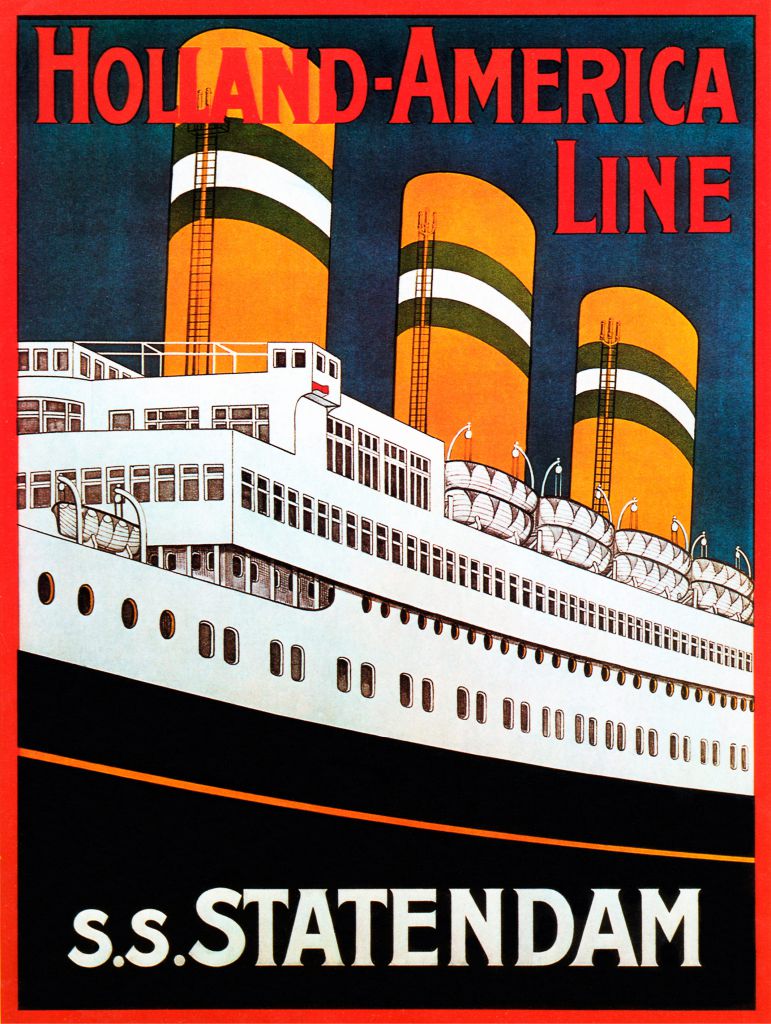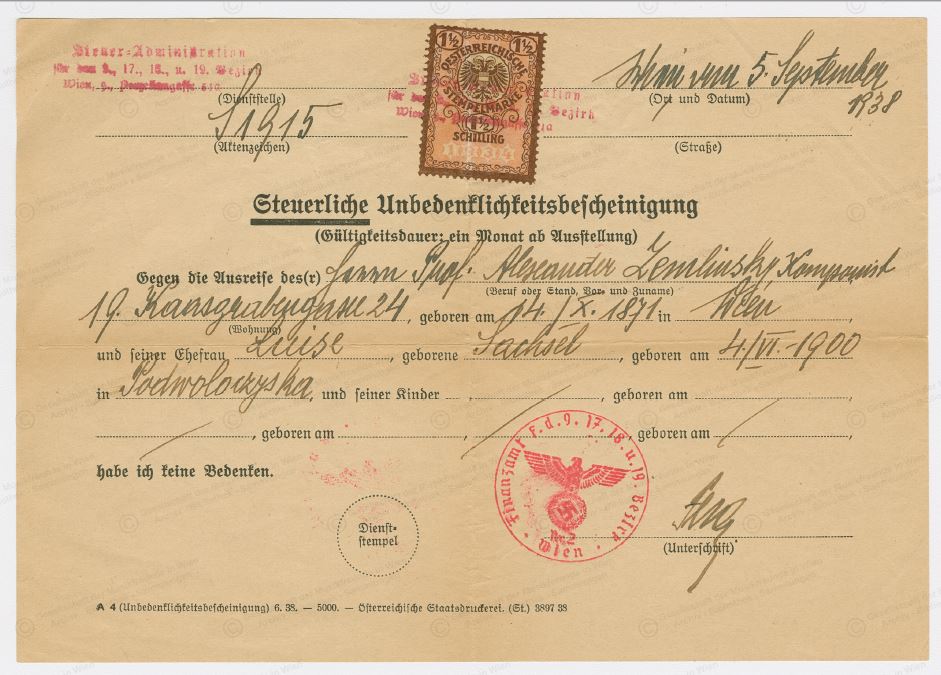Inspiriert vom weltweit gefeierten 150. Geburtstag Arnold Schönbergs beleuchtet die neue Ausstellung im Exilarte Zentrum der mdw das gesellschaftliche und kulturelle Umfeld des Begründers der Zweiten Wiener Schule. Im Besonderen wird das Augenmerk sowohl auf Alexander Zemlinsky, der Schönberg unterrichtete und ihn in die Wiener Musikkreise einführte, als auch auf den Schönberg-Schüler und späteren Assistenten Richard Hoffmann gerichtet, dessen Nachlass sich seit Kurzem im Archiv des Exilarte Zentrum befindet. Diese drei Persönlichkeiten, ihre berufliche, freundschaftliche und musikalische Verbindung sowie deren Schicksale während der Zeit des NS-Regimes werden anhand von Lebensdokumenten, Fotos und Notenmanuskripten nähergebracht.
Unzählige weitere Freigeister des frühen 20. Jahrhunderts aus Musik, Literatur, bildender Kunst und Architektur wie auch wohlhabende Kunstfreunde und Mäzene trafen zum künstlerischen Austausch und zu rauschenden Festen in der von Josef Hoffmann geplanten Künstlerkolonie im damals schon noblen 19. Wiener Gemeindebezirk aufeinander. Der Großteil von ihnen hatte jüdische Wurzeln und wurde von den Nazis verfolgt. Viele konnten emigrieren, viele kamen ums Leben. Schillernde Persönlichkeiten wie Alma Mahler-Werfel, Gustav Mahler, Carl Moll, Grete Wiesenthal, Koloman Moser, Hugo Henneberg, Sigmund Freud, Hugo Botstiber, Emmy und Egon Wellesz, Yella und Emil Hertzka, Maria Hofer, Richard Gerstl, Adolf Loos und Arnold Schönberg inspirierten einander in dieser von Jugendstil geprägten Villenkolonie, welche als Architekturplan gezeigt und als Modell nachgebaut wird.

Arnold Schönberg emigrierte als einer der ersten bereits 1933, Richard Hoffmann 1935 und Alexander Zemlinksy nach dem „Anschluss“ 1938. Wie sehr verändert das erzwungene Exil einen Menschen, einen Künstler in seinem Schaffen? In der Ausstellung werfen wir einen Blick auf das jeweilige Œuvre vor und nach der Flucht in eine ungewisse Zukunft. Die Frage, wie das Leben in Europa ohne Hitlers nationalsozialistische Rassenlehre für Millionen betroffener Menschen ausgesehen hätte, lässt sich nicht mehr beantworten und der Verlust, den Europa an künstlerischem Potenzial dadurch verloren hat, nicht bemessen. Es wird demonstriert, mit welch willkürlicher Bürokratie man jüdische und systemkritische Menschen schikanierte. Dokumente wie Zemlinskys Reichsfluchtssteuerbescheid und Alien Registration Receipt Card mit Fingerabdruck sind zu sehen. Zemlinsky und Schönberg gelang die Flucht per Transatlantik-Dampfschiff in die USA, Richard Hoffmann emigrierte nach Neuseeland. Andere Flucht-Schicksale, Wege an Orte des Exils werden in der Ausstellung rekonstruiert. Eine Slideshow wird von Tonaufnahmen der Stimmen von Arnold Schönberg und Richard Hoffmann begleitet.

Vielen Komponist_innen und Musiker_innen aus der damaligen Gesellschaft um Zemlinsky, Schönberg und Hoffmann trafen einander im Exil wieder – so zum Beispiel in der Villa Aurora in Los Angeles, Kalifornien oder im Black Mountain College in North Carolina. Anderen gelang der Weg in die Freiheit nicht. Sie lebten im Untergrund (Josef Polnauer, Olga Novakovic u. a.) oder wurden von den Nazis ermordet (Schönbergs Familienmitglieder oder der Schönberg-Freund und Verleger Henri Hinrichsen, Fritz Löhner-Beda u. a.). Anhand von Dokumenten und Briefen ausgewählter Persönlichkeiten werden Schicksale nachgestaltet. Triangel der Wiener Tradition betitelt die Verbindung dreier Musiker, die als Komponisten, Pädagogen und Freunde ein ähnliches Schicksal teilten: Sie waren jüdischer Herkunft und somit Verfemte und Verbannte.
Veranstaltungstipp:
Triangel der Wiener Tradition: Zemlinsky – Schönberg – Hoffmann
5. März bis 20. Dezember 2024
Exilarte Zentrum, Lothringerstraße 18, 1030 Wien

